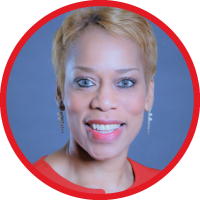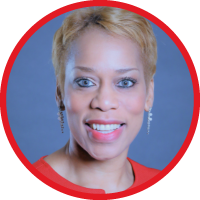Equity & Equality are not Equals in Higher Education
During my 25-year span in higher education, I have often heard the words, “equity” and “equality” used interchangeably. But the truth remains that they are not the same, nor should they be compared as equals.
Yes, the words are similar but there is a distinct variation between them. And understanding this difference can be the key to truly retaining students, meeting their individual needs, and seeing them walk across the stage at graduation.
So, yes, making sure all students have equal access to resources is an important goal for institutions of higher learning, as this is the definition of equality. All students should have the resources necessary for high-quality education. But it should also be noted that some students need more to get there in order to meet them exactly where they are in their starting point in higher education to close the achievement gap. And this is where equity comes in. Equity is the state of fairness. It is about identifying and eliminating barriers, as well as assessing the individual level of resources needed. Why? Because each student comes into higher education at varying levels. It is about meeting students where they are and helping them to succeed from there. This is vital for higher education administrators, faculty, and staff to be aware of in order to align their institutional and student success goals.
Doing such requires understanding the unique challenges and barriers faced by individual students or by populations of students (first-generation, low-income, and historically underrepresented populations) and providing additional support and resources to help them overcome those barriers. But there is another tier to why this is so vital. It also means ensuring every learner is treated with dignity and is adequately prepared to make meaningful contributions to society.
Why? Because all too often and I can share story after story of students who came into the First-Year Course classroom already stigmatized or stereotyped. They walked into the classroom not confident because so many people have told them in their lives what they cannot do or achieve.
Maya Angelo once said, “People will forget what you did, they will forget what you said, but they will NEVER forget how you made them feel.”
It is about ensuring that the top-down institutions are truly understanding their demographics, ensuring resources are in place, and executing those services to the students with dignity and respect. It is about having the institution and faculty work in tandem to ensure student's success, especially across specialized populations.


As a First-Year Seminar faculty for over 25 years, I am on what I call the “First-Year Front Line”. I am often students' first line of contact as they begin their educational journey. I am their instructor, but I am also their mentor, counselor at times, encourager, cheerleader and have helped walk many students off the “ledge” of failing out or dropping out of college.
Over 80% of these students I am referring to are from specialized populations. I saw first-hand how assessing each student individually can have powerful effects in the classroom. I saw first-hand how life circumstances can derail students who do not have proper support systems in place.
But ultimately, I saw first-hand the importance of creating a community of learners in the classroom through equity, inclusion, and treating students with dignity and respect.
So, to put this as a visual representation I developed what I call - The Equity Equation. It is based on an equation most of us learned years ago, which happens to be one of the most famous in the world by Albert Einstein – E=mc2.
In this equation by Albert Einstein energy, speed of light, and mass are all interconnected. It ties them all together.
Well, there is an equity equation that I have developed that ties it all together for institutions, which is E=dr2 or Equity = Demographics/Resources squared. Squaring in math is raising to the power 2.
As an institution of higher learning, raising, and multiplying the awareness of your (d) student demographics (particularly underrepresented populations) as well as making (r) resources accessible to underserved populations will move you to become a more holistic student-centric educational institution, thus automatically improving equity.
With Connect Master Student Success 2.0, which is the first 100% digital product in the market for first-year college students, institutions can have the opportunity to utilize a product that seamlessly weaves the concept of equity and adaptive technology together. Connect Master’s adaptive technology tool is an amazing first step to meeting students exactly where they are in their learning. Essentially, adaptive technology is equity in action.
Some instructors often think that adaptive technology may replace their role in the classroom. However, it is just the opposite.
Instructors are able to assist students even more…. why? Because students become more honest with themselves, their strengths, their weaknesses. They take more control of their learning. Instructors can help students in the areas they need most and provide individualized insight, which is vital in first-year seminar courses. So, although equity and equality sound the same, how you put each one into action will have a profound impact on your students, faculty, and the institution as a whole.


About the Author: LaShana Stokes, M.Ed.
LaShana Stokes is currently a First Year Seminar Instructor at Central Penn College and has been in higher education for over 25 years with roles ranging at Harrisburg Area Community College from a First-Year Seminar Professor to Department Chair to Dean of Enrollment. She is also the author and content architect of McGraw-Hill Education’s first digital product for entering freshman called Connect Master Student Success. To date over 150,000 students nationwide have used this innovative and engaging eBook.
She is passionate about helping first year students succeed and is equally committed to bringing awareness to the importance of diversity, inclusion and equity. She has spoken to audiences on the topic statewide, nationally and internationally.



